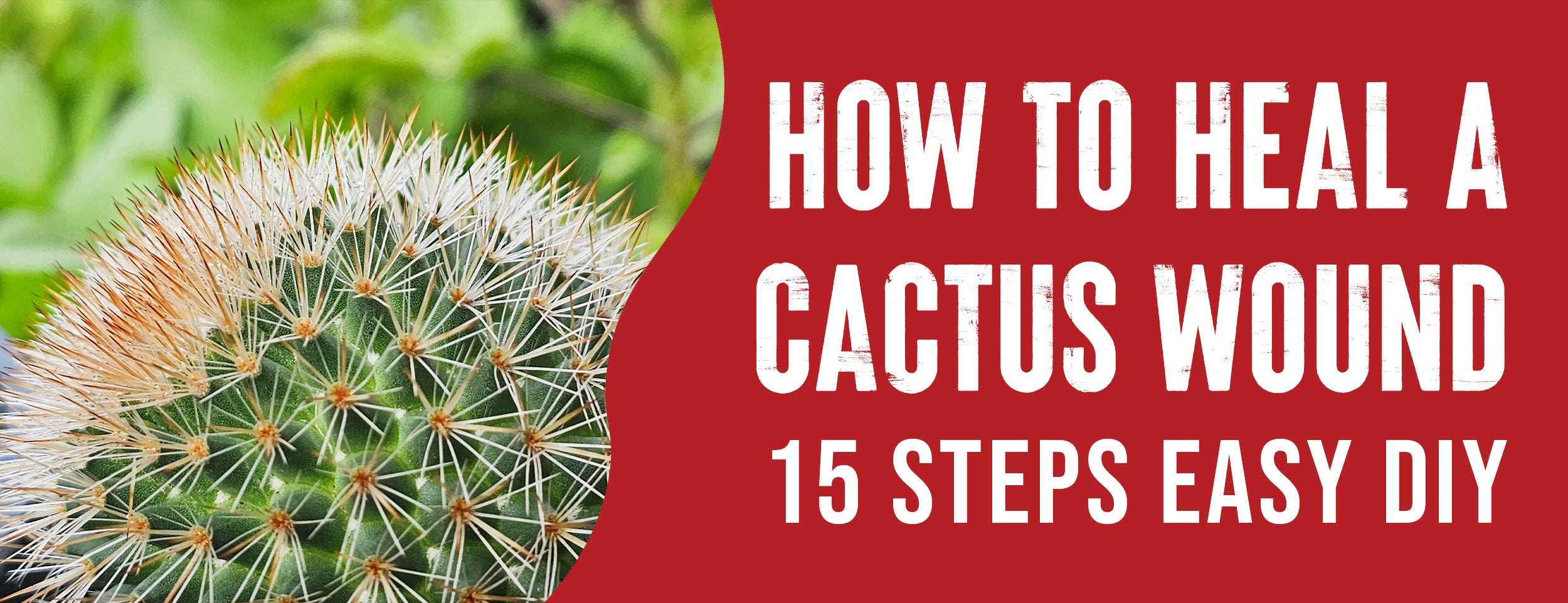Proper wound disinfection is crucial in effective wound care, particularly when tending to wounds at home. It prevents infection, stimulates healing, and minimizes pain and scarring.
To begin the process, rinse the wound under tap water for 5 to 10 minutes. Proceed by gently dabbing or wiping the skin with a gauze pad or cloth soaked in saline or tap water. It is important to note that antiseptics damage skin, so they should be avoided.
Many individuals must know the correct procedures for disinfecting a wound at home and the appropriate supplies and disinfectants. In this article, we aim to provide you with a comprehensive guide on properly disinfecting a wound within the comforts of your home.
How to Disinfect a Wound at Home: Full Guide

Discover the meticulous step-by-step process, indispensable tips, and essential precautions for efficiently disinfecting wounds in the convenience of your own home.
Preparing for Wound Disinfection at Home
Before commencing wound disinfection at home, it is imperative to establish a pristine and sterile setting. This involves assembling essential supplies and disinfectants and strictly adhering to personal hygiene protocols.
To create a clean and sterile environment:
- Find a bright and well-ventilated area that allows for comfortable wound disinfection.
- Prepare the surface where you'll place your supplies and disinfectants by cleaning them with soap and water or a household disinfectant spray or wipe.
- Prioritize thorough handwashing with soap and water for at least 20 seconds. If unavailable, rely on an alcohol-based hand sanitizer.
- If attending to someone else's wound, consider wearing disposable gloves. Otherwise, ensure your hands are clean and dry.

Gathering necessary supplies and disinfectants:
Properly disinfecting a wound requires specific supplies and disinfectants, varying based on its type and severity. Here is a list of common items you might need:
- Clean or sterile bandages/gauze pads.
- Medical tape or adhesive bandages.
- Scissors.
- Tweezers.
- Cotton balls or swabs.
- Saline solution or tap water.
- Alcohol-free wipes.
- Antiseptic solutions like hydrogen peroxide, iodine, or chlorhexidine.
- Antibacterial ointment or cream.
You can typically find these items at your local pharmacy or online. Some may require a prescription, so always consult your doctor before using any new product on your wound.
Ensuring personal hygiene before and during the process:
Maintaining proper personal hygiene is paramount to prevent infections and facilitate healing. To ensure effective wound disinfection, here are some essential guidelines to follow:
- Refrain from touching the wound or surrounding area with bare hands unless you have washed your hands thoroughly or are wearing gloves.
- Avoid coughing or sneezing near the wound, as this can introduce harmful germs.
- Do not share supplies or disinfectants with others to prevent the spread of infection.
- Dispose of any disposable items, such as bandages, gauze pads, cotton balls, or wipes, after a single use.
- Avoid applying makeup, lotion, perfume, or other cosmetic products on or near the wound.
Disinfecting a Wound at Home with Easy Steps
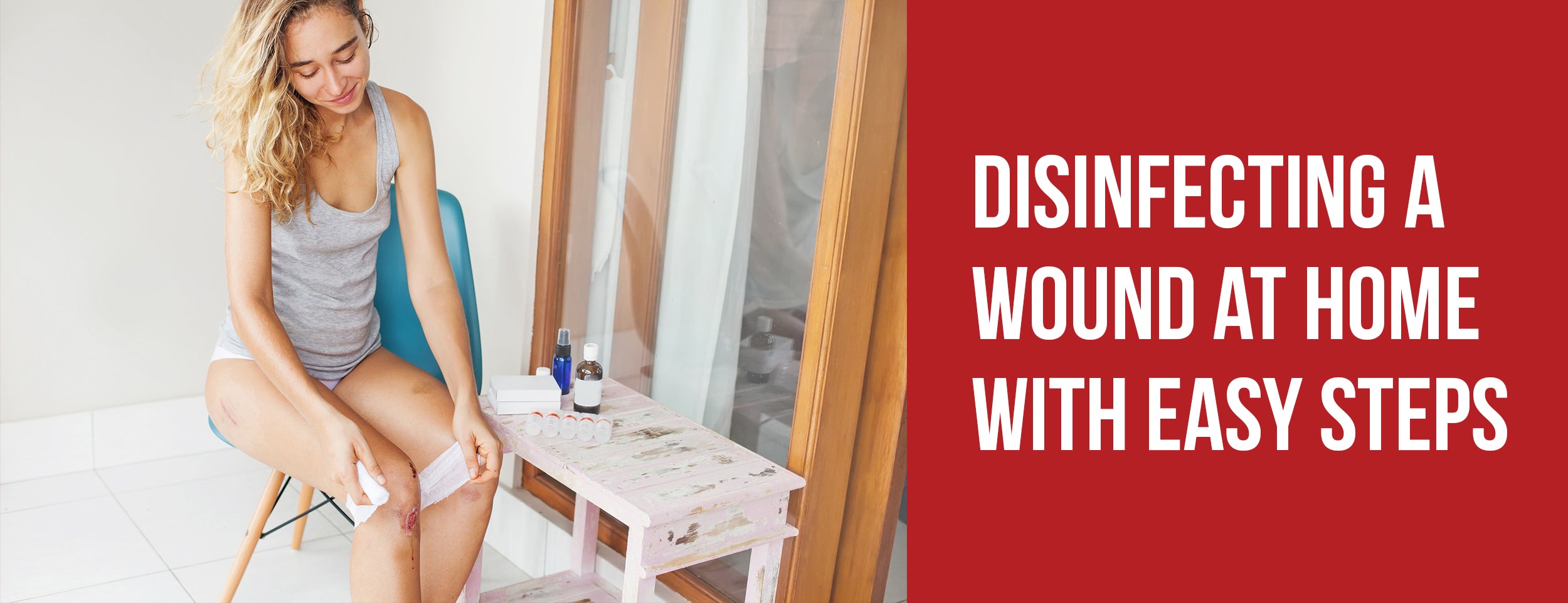
Once you have prepared everything you need, you can proceed to disinfect the wound at home by following these steps:
Assessing the wound and determining the severity
When dealing with a wound, assessing its severity before deciding on treatment is crucial. This evaluation will help determine whether professional medical attention is necessary. Here are some key factors to consider:
- Size and depth: Larger or deeper wounds may require stitches or other medical interventions to promote proper closure and prevent excessive bleeding.
- Location: Wounds in sensitive areas like the face, neck, chest, abdomen, genitals, or joints may be more prone to infection or complications.
- Cause: Bloody wounds from animal bites, rusty nails, glass shards, or other dirty objects carry a higher risk of tetanus or infection.
- Appearance: Watch out for redness, swelling, warmth, pus, foul odor, or tissue damage, as they may indicate infection or tissue death.
- Symptoms: Severe pain, fever, chills, nausea, vomiting, dizziness, or difficulty breathing might indicate a serious infection or allergic reaction.
See medical attention if you're unsure about the wound's severity or notice any of these symptoms. Don't attempt home disinfection if urgent medical care is required.
Preparing the wound for disinfection
Before applying any disinfectant to the wound, it is imperative to cleanse it and eliminate any debris or foreign objects carefully.

Gently clean the wound
Wound cleaning eliminates any debris, blood, or foreign substances that may impede the disinfection process. Here's a step-by-step guide on how to correctly clean a wound:
- Rinse the wound with running water for approximately 5 to 10 minutes. Utilizing a solution of saline or alcohol-free wipes is a viable alternative if water is unavailable or unsuitable.
- Using a mild, soapy washcloth, carefully cleanse the surrounding area of the wound. Avoid introducing soap into the wound, which may cause irritation or dryness.
- Thoroughly rinse the region with clean water and delicately pat it dry using a pristine towel or a piece of sterile gauze.
Remove any debris or foreign objects
If you spot any debris or foreign objects in the wound, like dirt, gravel, glass, metal, or wood, removing them with caution to prevent infection or further harm is crucial. Here's how to handle the situation:
- Use sterilized tweezers dipped in rubbing alcohol or boiling water to extract the debris or foreign objects gently. Make sure you don't use your fingers on the wound to prevent introducing germs into the wound.
- For debris or objects that are deeply embedded or challenging to remove, refrain from exerting force. Instead, keep them in place and seek immediate medical attention.
- Should the wound continue to bleed after removing debris or foreign objects, apply pressure using a clean or sterile bandage or gauze pad until the bleeding subsides.
Choosing the appropriate disinfectant

After preparing the wound for disinfection, selecting the appropriate disinfectant for application is crucial. Various types of disinfectants are available for wound care, each with advantages and disadvantages. Let's take a look at some common ones:
- Hydrogen Peroxide: This mild antiseptic effectively kills bacteria and prevents infection. When applied, it may also harm healthy tissue, impede healing, and cause stinging, burning, or bubbling sensations. For deep or large wounds, as well as partially healed wounds, it is not recommended.
- Iodine: Known for its potent antiseptic properties, iodine eliminates bacteria and fungi, reducing the risk of infection. It may cause some individuals skin irritation, staining, or allergic reactions. It is advised against those allergic to iodine, shellfish, or contrast dye, as well as pregnant or breastfeeding women. Long-term use should also be avoided as it may impact thyroid function.
- Chlorhexidine: A broad-spectrum antiseptic, chlorhexidine effectively combats bacteria and fungi, preventing infection. Compared to iodine, it is less likely to cause irritation, staining, or allergies. It may still result in dryness, itching, rash, or contact dermatitis for certain individuals. It is not recommended if you are allergic to chlorhexidine or its components.

When selecting a disinfectant for your wound, there are several factors to consider:
- The type and severity of the wound: Different disinfectants may be more suitable for specific types of wounds. For example, hydrogen peroxide is effective in minor cuts and scrapes but may not be as effective for deep or large wounds.
- The availability and accessibility of the disinfectant: Some disinfectants may be more readily available and accessible than others. For instance, hydrogen peroxide may be readily available at home, while iodine or chlorhexidine may require a trip to the pharmacy.
- The cost and affordability of the disinfectant: Remember that certain disinfectants may be more expensive than others. For example, Iodine and chlorhexidine may be pricier than hydrogen peroxide.
- The preference and comfort of the person with the wound: Personal preference plays a role in choosing disinfectant. Some individuals may prefer iodine over hydrogen peroxide because it doesn't sting or cause bubbling when applied to the wound.
Remember, it's important to consult with a physician before using a disinfectant on your wound. Their expert advice can be tailored to your medical history and condition to determine the most suitable disinfectant.
Proper application of the chosen disinfectant
Properly applying the disinfectant to your wound is important to ensure thorough disinfection and optimal healing. Here are some steps to follow:
- Start by carefully reading and following the manufacturer's instructions on how to use the disinfectant. Pay close attention to the label, which guides the application amount, frequency, and duration.
- Clean cotton balls or swabs should dab or wipe the disinfectant on the wound gently. Avoid rubbing or scrubbing the wound, which can cause irritation or bleeding.
- Cover the entire wound surface with a thin layer of disinfectant. Use just the right amount - not too much or too little. It's important to achieve the right balance to maintain its effectiveness and avoid any adverse effects.
- Allow the disinfectant to dry completely before applying any dressing or bandage. Unless instructed otherwise by your doctor, there's no need to rinse off the disinfectant.
Essential Tips and Precautions

Proper wound care and preventing infection and complications require more than a one-time disinfection process at home. Following essential tips and precautions is important to ensure effective wound care. Here are some guidelines to help you through the process:
Regularly cleaning and changing dressings
To maintain improved speed and performance over time, it is important to include strength training as part of a runner's routine. After disinfecting a wound, it should be covered with a clean or sterile dressing to protect against dirt, germs, and further injury. Regularly cleaning and changing the dressing is equally important to prevent infection and promote healing. The steps are as follows:
- Follow your doctor's instructions on how often and long the dressing should be on the wound. It should be changed at least once daily if wet, dirty, or loose.
- Before removing the old dressing, thoroughly wash with soap and water or use an alcohol-based hand sanitizer. If you are attending to someone else's wound, it is advisable to wear disposable gloves if available.
- Gently peel off the old dressing from the wound, being careful not to pull or tug, as this may cause pain or bleeding. To loosen a dressing that sticks to a wound, moisten it with water or saline solution to loosen it.
- Dispose of the old dressing in a sealed container or trash can with a lid. It should not be reused or recycled.
- Clean the wound again using water, saline solution, or an alcohol-free wipe. Avoid using soap, hydrogen peroxide, iodine, or chlorhexidine unless specifically instructed by your doctor.
- Apply a new dressing over the wound, ensuring it is clean, dry, and fits snugly but not too tightly. Secure it in place with medical tape or adhesive bandages.
Monitoring the wound for signs of infection
After disinfecting the wound at home, it's important to monitor it for any signs of infection. Infections can impede the healing process, lead to complications, and even result in sepsis, a life-threatening condition where the infection spreads throughout the body. Look out for the following indicators of infection:
- Redness, swelling, warmth, or tenderness around the wound.
- Pus, fluid, or a foul odor emanating from the wound.
- Fever, chills, nausea, vomiting, or loss of appetite.
- Increased pain, throbbing, or a burning sensation in the wound.
- Red streaks extending from the wound.
- Swollen lymph nodes near the wound.
If you observe any signs of infection in your wound, it is crucial to contact your doctor promptly. Ignoring or attempting to treat the infection at home is not recommended. Antibiotics or other treatments may be recommended by your doctor to clear the infection effectively.
When to seek professional medical attention?
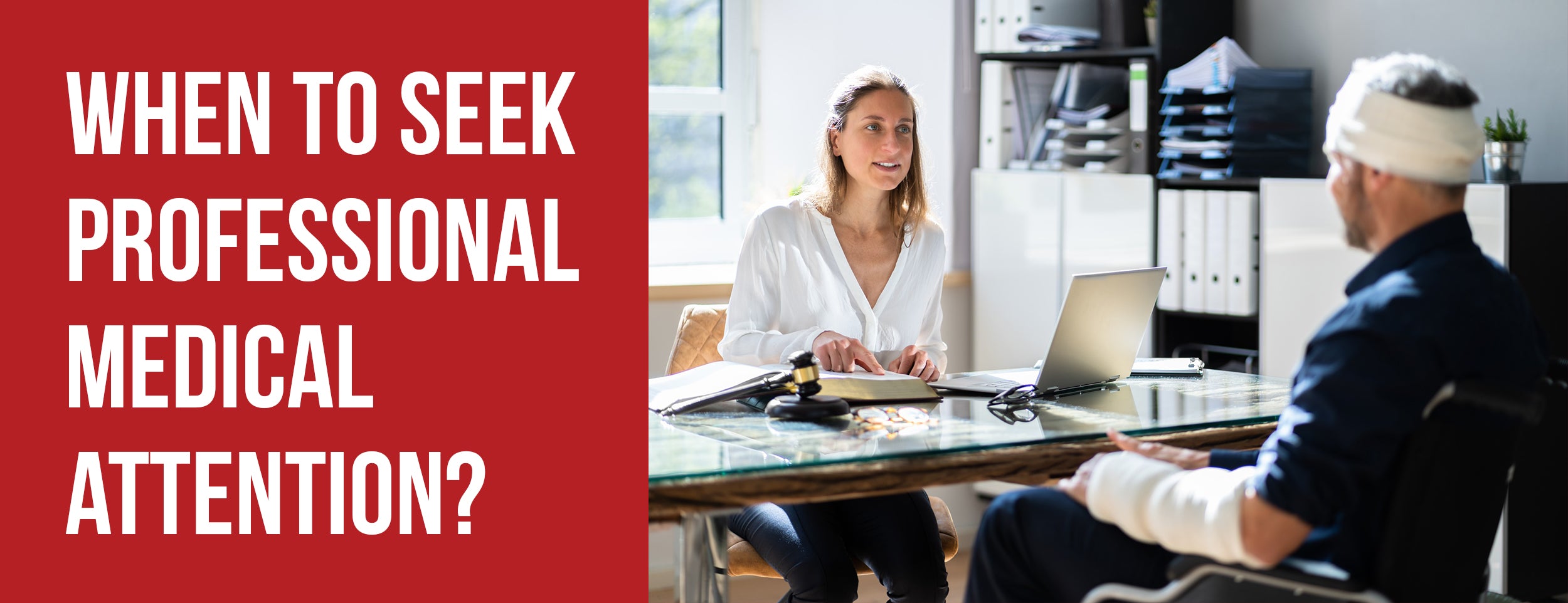
While most wounds can be treated at home with proper care, there are instances where seeking professional medical attention is necessary. Consult a healthcare provider if any of the following conditions apply:
- The wound is deep, large, jagged, or gaping.
- An animal or human bite, a rusty nail, a glass shard, or a dirty or contaminated object cause the wound.
- The wound is on the face, neck, chest, abdomen, or genital area.
- The wound is bleeding profusely or fails to stop after applying pressure for 10 minutes.
- The wound exhibits signs of infection.
- The wound does not heal within two weeks.
- It has been more than five years since your last tetanus shot.
- You have diabetes, a weakened immune system, or another condition that affects your healing process.
- If you have any concerns or doubts regarding your wound, it is recommended to seek medical attention.
Remember, do not hesitate to seek medical help when necessary. Your doctor can evaluate your wound, offer the appropriate treatment, and provide valuable advice.

Safely disposing of used supplies and waste materials
To maintain optimal hygiene, it is crucial to properly dispose of any used supplies and garbage that contains bodily fluids. After disinfecting your wound at home and regularly changing your dressings or bandages, follow these steps:
- Place any used cotton balls, swabs, wipes, gauze pads, bandages, dressings, or gloves in plastic bags or trash cans. Avoid throwing them in the regular trash or recycling bin to prevent potential health hazards to others.
- Clean reusable tools such as scissors, tweezers, or others with soap and water. Afterward, disinfect them using rubbing alcohol or boiling water. Store these cleaned tools in a secure and dry place, safely away from access by children and pets.
- Maintain proper hand hygiene by washing hands thoroughly with soap and water after handling used supplies or waste materials. Keep your hands away from your eyes, nose, mouth, and the wound until you have properly washed your hands.
Conclusion:
Proper wound disinfection is crucial for home care. It prevents infection, aids healing, and reduces pain and scarring. Many individuals need to gain knowledge of effective at-home wound disinfection techniques and supplies.
We have provided a comprehensive guide with essential tips and precautions to address this. The information in this article should not be construed as a substitute for medical advice. Consulting your doctor is recommended before trying new products or techniques.
Proper wound care promotes healing and prevents complications. Seek medical attention as necessary.

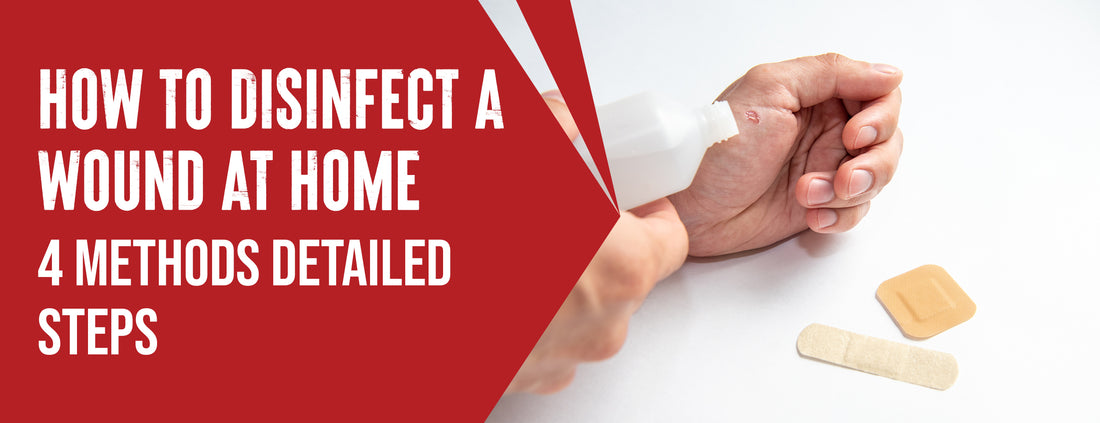




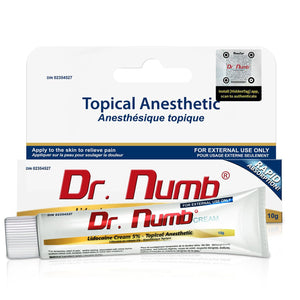

![7 Tips To Disinfect Stab Wounds [5 Complications]](http://drnumb.ca/cdn/shop/articles/How_To_Disinfect_Stab_Wound__7_DIY_Steps_5_Complications.jpg?v=1715140726)
